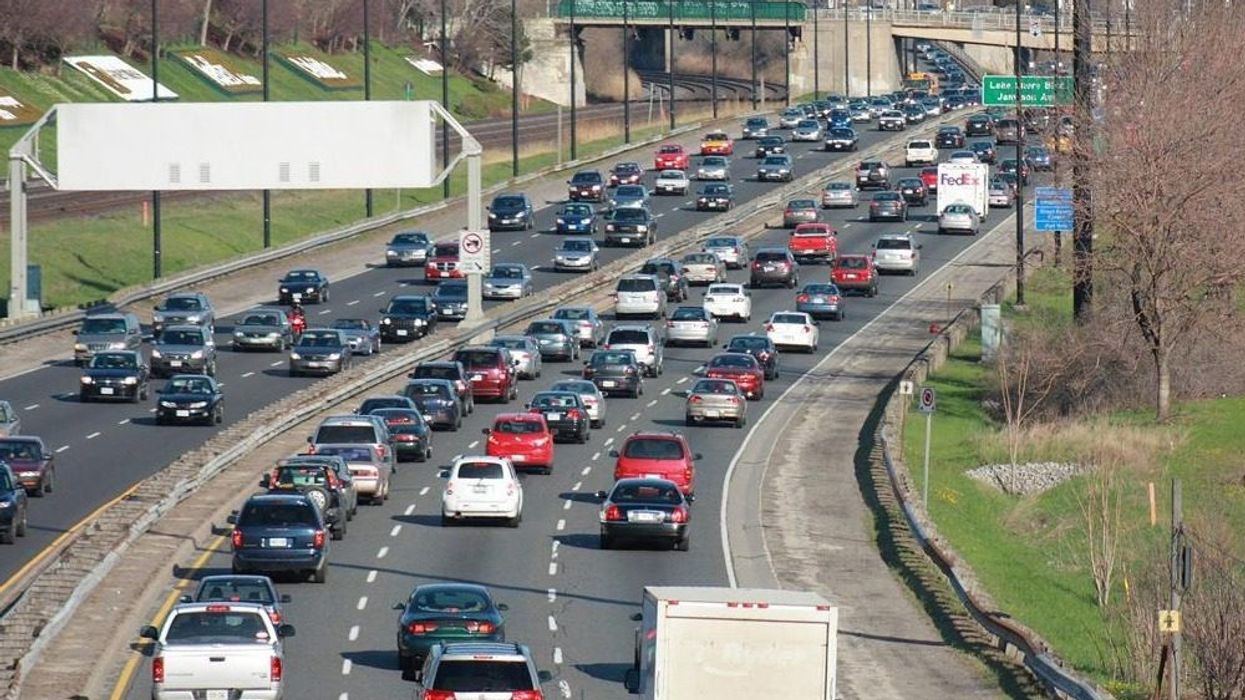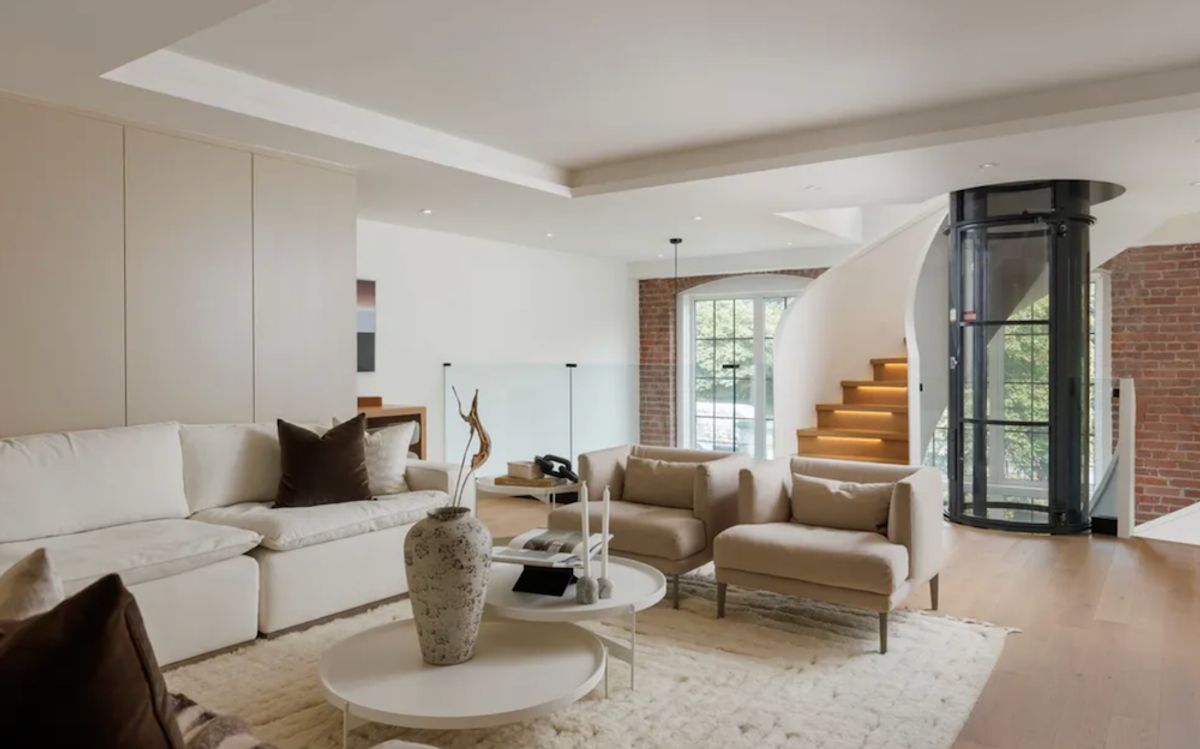A last-minute deal between TTC and ATU Local 113 saved Toronto from a chaotic nightmare today. However, the mere preparation for a potential strike gave us a glimpse into what our city might look like without its public transit system.
We Torontonians are used to shaking our heads, rolling our eyes, and grumbling about traffic jams caused by minor interruptions during our commute. But can we even imagine what life would be like if there were no public transit, and all 1.7 million commuters served by TTC each day had to drive? Our entire city would turn into a gigantic parking lot!
Now, picture this: what if our public transit system were more extensive and convenient, capable of taking all of us out of our cars and freeing up hours wasted in traffic? Imagine the difference that would make in our lives.
Toronto will be contending with lane reductions on the Gardiner Expressway until 2027, and will face downtown gridlock due to construction on the much-needed Ontario Line until 2030. This presents a significant opportunity for public transportation agencies to showcase the value and importance of reliable and efficient transit systems. This rare moment of disruption in typical car-centric mobility patterns prompts a re-evaluation of transportation in our city. If public transit agencies seize this golden opportunity, rise to the occasion, and provide a reliable and attractive alternative, these congestions could catalyze a meaningful shift away from reliance on cars for daily needs — a change we've long hoped and strived for.
There is also nothing wrong with getting creative, and having fun while doing so! Many Torontonians can't even begin to imagine not driving their cars everywhere. But the good news is, when the usual way of doing things is interrupted, it creates a golden opportunity for imagination to open doors to new possibilities.
What if our transit agencies ran creative and attractive awareness campaigns that would encourage drivers to try out taking transit instead? I'll leave it to the creatives to come up with the right wording and strategies, but in my wildest imagination, I picture such an attractive campaign that makes every Torontonian think twice before grabbing their car keys: “Should I sit behind the wheel, staring at the bumpers of the cars in front of me for hours, or should I take the TTC and check out what's new today?"
Increasing public awareness, increasing service frequency, implementing real-time tracking and information systems, enforcing priority (like the King Streetcar Corridor), enhancing cleanliness and safety measures, and providing responsive customer support — all of these can greatly enhance the attractiveness of public transit. Moreover, emphasizing the cost-effectiveness, environmental advantages, and convenience of using alternative transit modes can encourage people to reconsider their transportation choices and adopt public transit as their preferred mode of travel.
READ: From A 'Single Track' To A Serious Commitment: Metrolinx's GO Expansion Will Reshape The Region
While we focus on expanding and enhancing our public transit network, there are some low-hanging fruits we can aim for as well.
For instance, we can begin by providing transit signal priority and dedicated lanes for our existing buses and streetcars. It is genuinely difficult to justify investing billions of taxpayer dollars in public transit infrastructure when our streetcars, each capable of carrying over 100 people, get stuck in traffic because some individuals prefer moving around downtown in oversized SUVs and pickup trucks — or because a handful of cars ahead need to turn left, causing delays for dozens (or even hundreds) of people on the streetcars waiting for the green light. (Like the Bathurst Streetcar, for example.)
Another one of these low-hanging fruits — which we can easily integrate into our transit system, and which would offer great returns on investment — is building more and safer biking infrastructure across our region. In Toronto, we have ~38 km of planned bike lanes to be built in 2024. Cycling is unparalleled in its efficiency, affordability, and environmental friendliness (except perhaps for walking, in shorter distances). According to a 2019 survey by the City of Toronto, 70% of respondents ride bikes, a significant increase from 54% in 2009. More people are using bikes for daily trips, and there is growing interest in cycling if streets felt safer, and there were dedicated bike lanes to shield cyclists from traffic.
Currently, a staggering 87% of GTA households rely on cars for their daily commute. One commonly cited reason for this car dependency is the cold weather. The coldest days sum up to about 4 months of the year, which means this is simply a mindset we could shift away from — we see people in numerous cold cities around the world choosing biking as a reliable mobility option. In cold Copenhagen, for instance, two-thirds of residents use bikes for their daily commute, with 80% continuing to bike even on snowy days. Biking has consistently proven to be a preferred mode of transit worldwide, and Torontonians have already shown potential for (as well as interest in) adopting biking for their commutes. By creating a connected and extensive network of separated and elevated bike lanes, we can offer a reliable and safe alternative, capitalize on this growing interest, and attract a more diverse range of riders to choose biking as their preferred mode of transportation.
Moreover, our rail system is extensively under-utilized right now, with the potential to serve many more people — and cover broader areas of our region. One straightforward way to enhance its coverage (while we continue working on extensive GO expansion, and the many improvements it will bring) is to integrate our biking infrastructure with it. Bikes and trains are the perfect pair, and combining them isn't just convenient — it's smart. As cycling infrastructure expert Lior Steinberg highlighted in one of our Urban Design webinars, "In the Netherlands, regardless of where you live, you can cycle to a train station." This holds true even for rural areas (which, although different in many ways, can be likened to our suburbs here).
As Chris Bruntlett, the International Relations Manager of the Dutch Cycling Embassy, explains, their network of thousands of miles of smooth, signed, scenic, separated bike paths, connecting every remote corner of the country, has led to a cycling tourism industry worth €2.4 billion annually to the national economy.
Now, imagine the immense added value we could generate if we had a similar network in our region. Imagine a scenario where each of our GO train stations was linked to a network of safe bike lanes, and provided extensive bike storage spaces, appealing more to cyclists than drivers. Unfortunately, however, our GO stations primarily allocate their valuable land to over 70,000 surface parking spots, most of which are offered ‘free’ to car users, but come at the expense of everyone else — and the environment.
Toronto is facing a new reality of reduced lanes and downtown congestion for a prolonged period. Instead of succumbing to it, we can seize this moment to reimagine our city's transportation landscape. Together, we can reshape mobility habits, let go of our common and unfounded excuses for centring our lives around cars, and forge a more sustainable, prosperous and vibrant future for all residents.





















